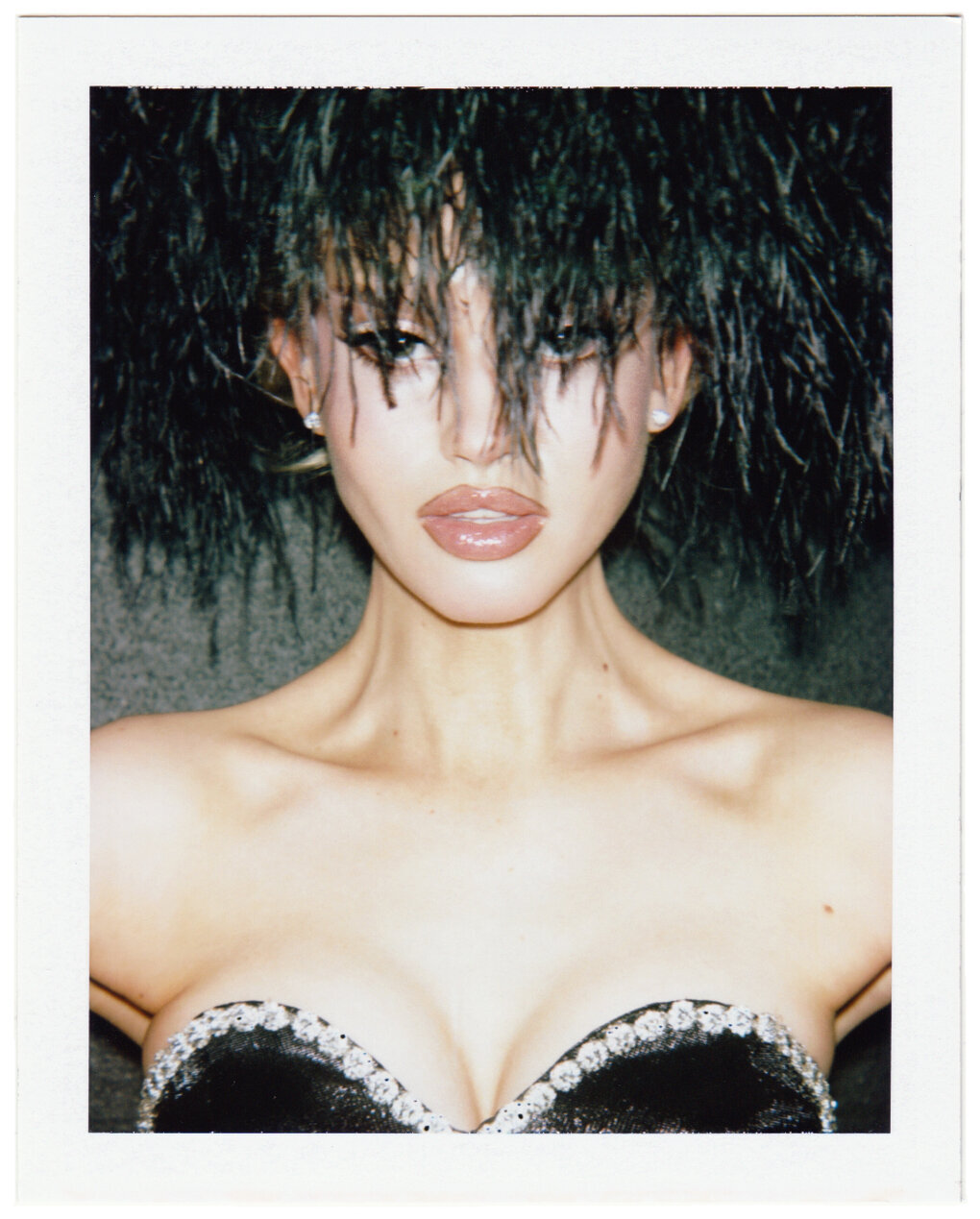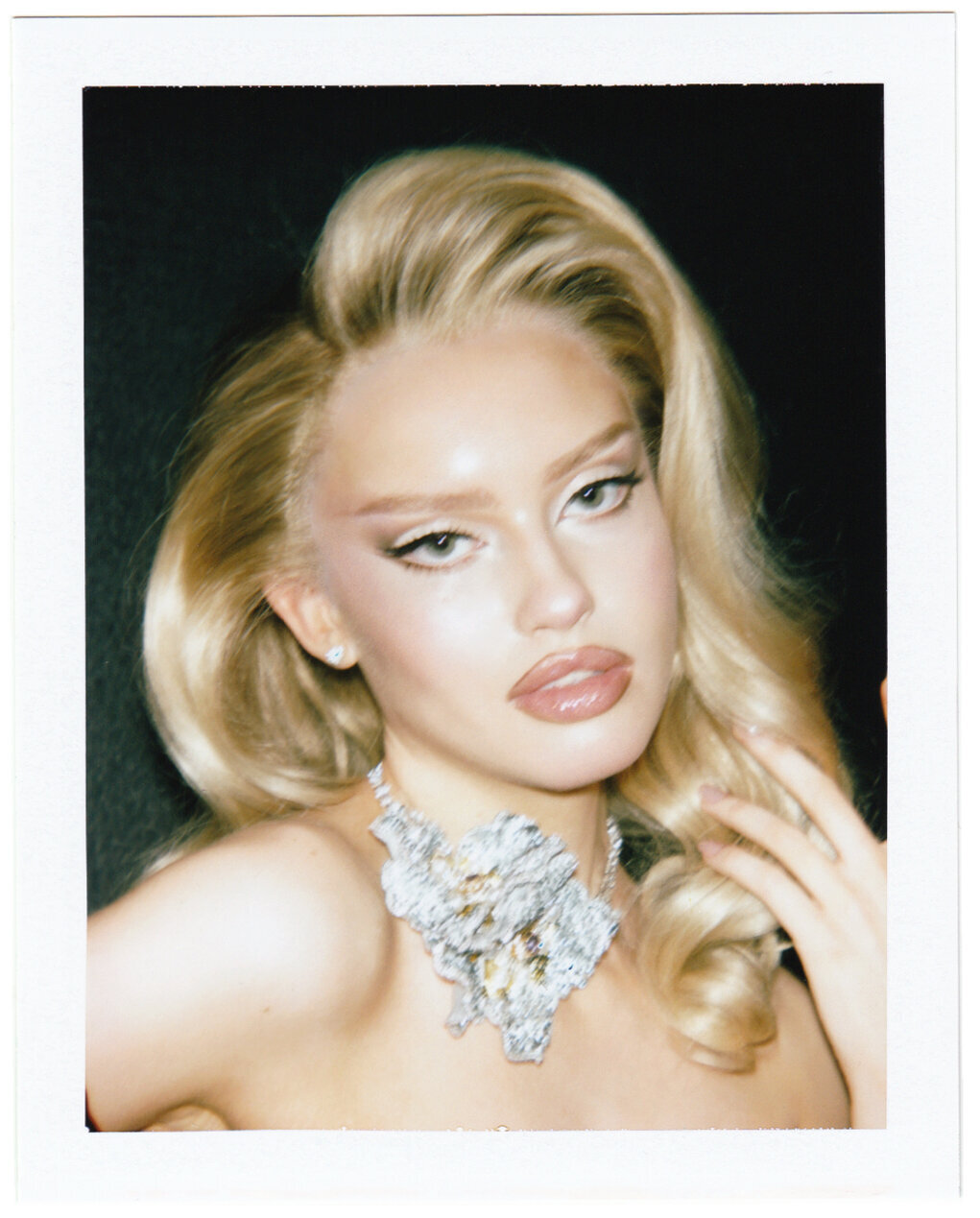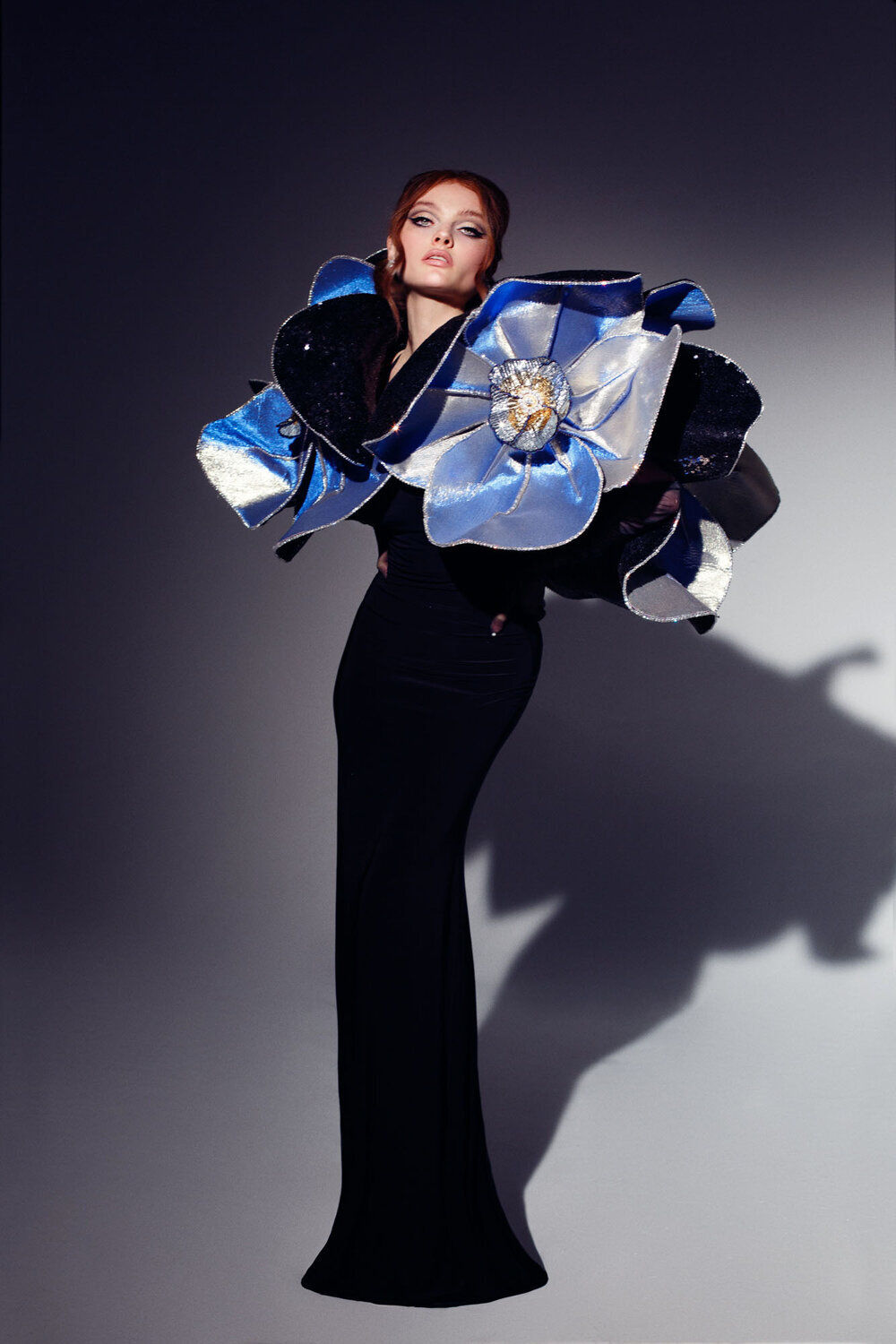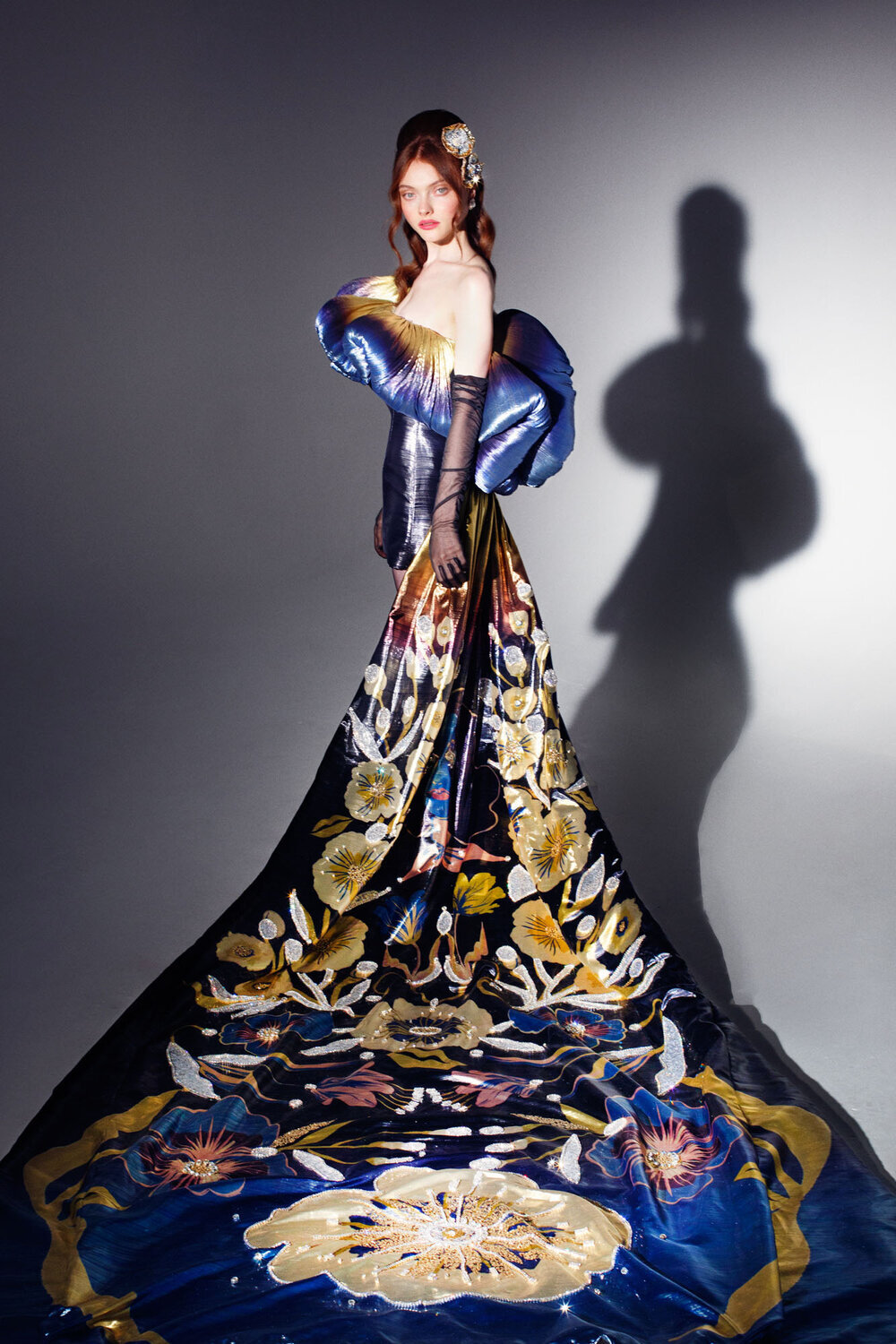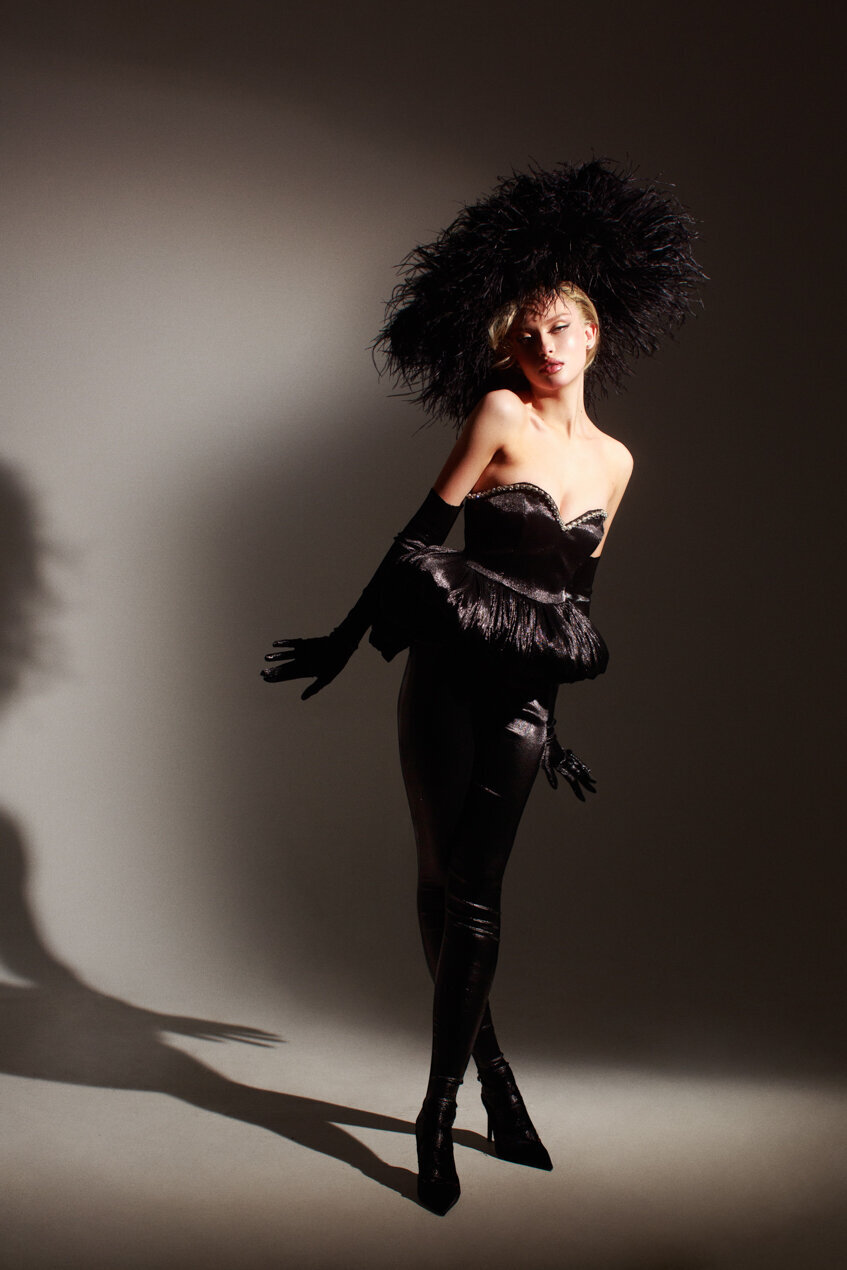Rebel with a cause: how Miss Sohee is front-running the future of demi-couture
Welcome to CHEW THE FAT WITH…, our long-form profile series where we invite you to sit down with fashion’s next generation as they dig deep into their memories. To chew some fat - defined as an informal conversation brimming with small talk - we encourage you to pull up a chair and take a big old bite as we spill the tea on the life and work of the industry’s need-to-knows. Just remember to mop up after yourself.
To call SOHEE PARK an overnight success wouldn’t be right somehow. It might suggest that the very ‘success’ behind the womenswear designer’s gowns has only happened through a moment of luck or spontaneity, as though she caught the hungry eyes of the internet just at the right time. While there’s no denying that her ascension onto the world’s radar was meteoric following her graduation from CENTRAL SAINT MARTINS last year, the crinoline gowns of Miss Sohee Couture are quickly turning heads away from Jackie Weaver and her chaotic parish council, skinny-jeaned sea shanties and Bernie’s Mitten worldwide tour, to the ingenious designer the industry has been waiting so patiently for.
It’s the week leading up to Park’s first ever ready-to-wear collection launch and the anticipation is palpable from screen to screen, catching the designer briefly in between the chaos of launching her online site while continuing to produce commissions with her team of three assistants. It’s been almost eight months since the debut of her floral-inspired graduate collection, dubbed The Girl in Full Bloom. And within those eight months, Park has dressed the likes of Miley Cyrus for that discotheque performance of Midnight Sky on The Graham Norton Show we’ve all re-enacted in the shower, Cardi B’s epic cover for Billboard to the mesmerising Bella Hadid on the pages of Vogue Spain. “I just came out of university and so I’m learning as I’m growing my business,” she shares modestly in light of her next collection. “It feels like there’s more people watching me now, there’s more pressure,” shares the South Korean designer.
Despite the roster of accolades Park has amassed so swiftly during her short time as a postgraduate, she’s bound by the determination to keep growing and germinating like her floral inspired creations. But what does it feel like to have such influential and well-known figures wearing your clothes? “I’ve been too busy to think about it,” she laughs. And so, in the year where time became distorted and ticks of the clock slowed down by the pangs of turmoil and grief, Park decided to speed up. At a time when the fashion industry began to analyse its own infrastructure, Park’s vision, one that she defines as ‘demi couture’ offered a salient example of challenging what is presented to us, which for Miss Sohee, meant changing the name of couture and taking on the early echelons of Charles Frederick Worth (considered to be the father of haute couture FYI), because anything less would be just too easy.
To squash the debate of its future – is it dead? Is it not?– the New York Times neatly quips that “it turns out, contemporary couture is not an oxymoron after all.” Park typifies the sentiment, reminding us of the initial intentions of couture: the ultimate provocation of experimentation. In a time when normality and comfort had been taken away, experimentation was the only way out of the darkness. Perhaps the allusion of fantasy that comes part and parcel of couture, that once felt so far away is the very balm that reinstills comfort back into our lives and Park wants to do so by rebooting its audience. No longer solely exclusive to a circle of big $pender$ who make it rain on the reg, she notes how “couture should be more widely explored, particularly the aspects that make it so renowned, such as craftsmanship because it really is the opposite of fast-fashion. As a couture designer, we produce a lot less when there’s an order so it’s more sustainable. There’s little waste as we only source materials on request.”
Instead, Park presents the allure of demi-couture, producing limited edition pieces that satiate palettes for unique designs, but at more affordable prices. “I don’t have an atelier or a fancy Parisian brand,” she smiles. “But I have the key characteristics, which is craftsmanship and the amount of work that goes into producing one silhouette alone,” which she estimates as one month per gown. Irritated by the seclusion of couture in a modern society, Park’s positioning and her latest RTW collection compliments her desire to appeal to a larger audience. “I realised that my gowns all have the potential to be more wearable and I wanted to keep the glamour and the silhouettes and I’ve really come to realise the power of social media.” With over 46,000 followers, Park attributes the awareness of her brand through Instagram. “I think I’m very lucky to be born into a generation where the world is connected through a platform, especially for fashion. Graduating into an industry of empty runways and cancelled shows, the digital grid became her stage. But her untimely entrance hasn’t deterred her one bit. “It can be difficult making pieces because sourcing fabrics can be hard, but there’s still a demand for couture and extravagant gowns. People want that feeling of escapism right now, and because people can’t travel, they’re gathering in gowns in their own homes.”
Escapism is ripe in Miss Sohee, a diversion she often sought growing up illustrating as a child. “My mom is an illustrator of children’s books and she collects them from around the world. Her studio was full of them and I remember as a kid just being in there, it was like my playground. I would read all the books and paint next to her and draw. It naturally became my thing.” Park’s reverie and willingness to run away into the depths of her imagination was only heightened by the austere institutions throughout her upbringing in Seoul, South Korea. “The education system was really strict and I was basically told to do the opposite of what I’m doing now; wear a school uniform; don’t stand out and we’d get in trouble if we wore make-up. It was a really conservative place, and so, I had to explore these things outside of school.”
Park’s peaceful rebellion took the form of skipping classes and sitting in the library and watching Marc Jacobs’ shows on her phone, back when he was the Creative Director at Louis Vuitton. Little did she know, only a few years later she would be interning for the American designer, assisting on the runway team and exploring embroidery techniques and creating delicate flowers that frame her work today with her own gossamer flower creations. “Perhaps I should like to dress Thumbelina then,” she muses of the petite fictional protagonist who emerges from a tulip, delving back into her vivid imagination. “She’s so small and my dresses are all inspired by flowers. Imagine she took one of the flowers and made a dress out of it?”
Beyond her floral fever, Park looks towards the Swinging Sixties and the archetypal films of Audrey Hepburn that she takes to watching while working. “I want to bring to life the things that have been forgotten about and translate it in my own modern way. Things that I miss so much,” referencing the voluminous silhouettes of bubbled sleeves and the fearlessly bright, swirling colour palettes that saw colours trickle into the other. Park’s nostalgia washes not only over her work but the incredible voyage she’s been navigating over the past months. “I wouldn’t really compare myself with the old CSM Sohee anymore. I’m Miss Sohee everyday now!” she jibes. “I’ve come a long way, but there’s so much more to go.”
“We’re going to be more diverse and inclusive. We’re going to be more sustainable.”
For fashion’s next generation, Park joins the procession of young designers committed to perpetuating change and keeping the rusty iron doors, guarded by the industry’s gatekeepers wide open and with a lick of WD40 so there’s no going back to the tarnished neglect of the past. “We’re going to be more diverse and inclusive. We’re going to be more sustainable,” she shares vehemently, leading the march with flowers in hand. “Imagine in the future making these glamorous gowns made only from sustainable fabric?” Imagine when that no longer becomes a fantasy from the rabbit hole of her lucid imagination, but normality?
As her rapturous journey continues full-speed, who knows what names Park will add to her roster this year or how many collections in-store for the coming seasons? Whatever and wherever they may be, it’s certain she will flourish wherever planted. And while viral attention isn’t always an easy path to grapple, Park remains as grounded drawing a dress for Jhene Aiko as she does the Sohee innocently drawing in her mother’s studio. Like a flower sprouting through ugly weeds, surrounded by the chaos of fame from names to likes, how does she measure the success of a momentous year? “When people message me telling me that I’ve inspired them,” her smile surfaces again. “When I get messages from strangers to tell me that my gowns have made their days better. That makes me feel like I’ve made it,” confesses the girl who really is in full bloom.


